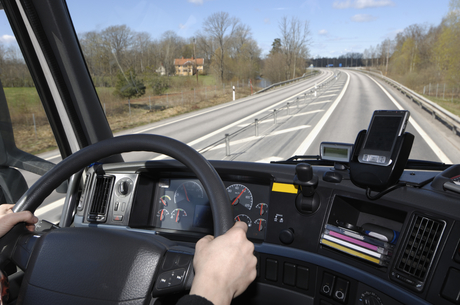Keep your eyes on the road

According to a joint paper released by the Australian Mobile Telecommunications Association (AMTA) and the National Road Safety Partnership Program (NRSPP), there are degrees of distraction when it comes to mobile phone use while driving and a system of messaging that says "all distractions are bad" is both ineffective and unrealistic.
It's no news that Australian law requires drivers to have mobile phones completely hands-free and mounted in a dock or cradle affixed to the car if they wish to talk on the phone while driving. Laws also allow for the use of Bluetooth and hands-free devices provided the driver doesn't touch the handset unless it's in a cradle.
However, according to AMTA, drivers need to know the relative risks of various tasks and to understand alternatives to reduce those risks. The single most effective action drivers can take is to keep their eyes on the road through the use of a cradle, hands-free technology, single-button dialling or voice-activated technology.

Not surprisingly, texting is one of the most dangerous (and illegal) activities you can undertake while driving. Studies have shown that texting drivers take their eyes off the road for 4.6 seconds over a 6-second interval. At 60 kph, that equates to driving over 75 metres without watching the road.
AMTA also suggests that, even with the necessary technology in place, it is not always appropriate to take a phone call. Making and receiving calls in heavy traffic, at intersections or in bad weather and poor road conditions is considered unsafe and it's best to let a call go to voicemail.
All of these recommendations are based on the results of a 100-car naturalistic study carried out by the US-based Virginia Tech Transportation Institute (VTTI), which analysed the driving behaviours of 241 people for over a year, resulting in 43,000 hours and 3,200,000 kilometres of driving data. Naturalistic studies offer valuable insights into driving risks in real-world driving conditions and are considered the 'gold standard' for road safety research. Australia is currently conducting a major study involving 400 cars.
The VTTI study concluded that visually demanding tasks that require a driver to look away from the road multiple times (such as texting, reaching for a loose phone or dialling a phone) are the most dangerous. In fact, reaching for a loose phone increases the likelihood of an accident by 8.8 times — compared with 3.1 times when applying make-up!
According to the VTTI report: "The results show conclusively that a real key to significantly improving safety is keeping your eyes on the road. In contrast, 'cognitively intense' tasks (such as emotional conversations or listening to audio books) can have a measurable effect in the laboratory, but the actual driving risks are much lower in comparison.
While some may suggest the answer is a complete ban on mobile phone use, AMTA disagrees. Banning all use would encourage more dangerous activities as drivers attempt to avoid detection. The entire point of mounting phones at dashboard or windscreen height is to facilitate the connection between the driver's eyes and the road.
Director of the VTTI, Professor Tom Dingus, explains the risks: "Taking your eyes off the road to dial a cell phone or look up an address and send a text increases the risk of crashing by 600 to 2300%.
"Most of the [higher risk] tasks require multiple steps to complete and multiple glances away from the road. Listening and talking on cell phones while driving is not particularly risky.
"In contrast, the tasks that we should focus heavily on correcting are the less frequent and newer cell phone tasks of texting, typing, reading, dialling and reaching for a phone," he said.
For more information, visit the Keep Your Eyes on the Road and NRSPP websites.
All-electric haulage fleet under mining alliance
A strategic alliance between Newmont and Caterpillar will see the rapid deployment of an...
How to measure ROI of field service management software
Some ROIs are easier to calculate than others. It's important to consider both tangible and...
Preparing the grid for electric vehicles
A new $3.4 million trial will help support growing adoption of electric vehicles across Australia...




